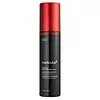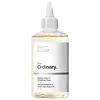What's inside
What's inside
 Key Ingredients
Key Ingredients

 Benefits
Benefits

 Concerns
Concerns

 Ingredients Side-by-side
Ingredients Side-by-side

Water
Skin ConditioningLactic Acid
BufferingAlcohol
AntimicrobialGluconolactone
Skin ConditioningDipropylene Glycol
HumectantCitric Acid
BufferingSodium Hydroxide
BufferingNiacinamide
SmoothingMethylpropanediol
SolventC12-14 Alketh-12
EmulsifyingGlucose
HumectantGardenia Florida Fruit Extract
Skin Conditioning1,2-Hexanediol
Skin ConditioningSalicylic Acid
MaskingDextrin
AbsorbentSorbeth-30 Tetraoleate
EmulsifyingMentha Piperita Oil
MaskingSuccinic Acid
BufferingEthylhexylglycerin
Skin ConditioningRosmarinus Officinalis Leaf Oil
MaskingSodium C14-16 Olefin Sulfonate
CleansingLavandula Hybrida Oil
EmollientMentha Arvensis Extract
MaskingEucalyptus Globulus Leaf Extract
PerfumingBrassica Oleracea Capitata Leaf Extract
Skin ConditioningJuniperus Mexicana Oil
MaskingPanthenol
Skin ConditioningDipotassium Glycyrrhizate
HumectantAllantoin
Skin ConditioningGlycolic Acid
BufferingHydroxyethylcellulose
Emulsion StabilisingCapryloyl Salicylic Acid
ExfoliatingMelaleuca Alternifolia Leaf Water
AntimicrobialButylene Glycol
HumectantSalix Alba Bark Extract
AstringentCladosiphon Okamuranus Extract
Skin ConditioningCentella Asiatica Leaf Extract
Skin ConditioningCamellia Sinensis Leaf Extract
AntimicrobialDecyl Glucoside
CleansingCoffea Arabica Seed Extract
MaskingCitrus Aurantium Bergamia Leaf Extract
AstringentPinus Densiflora Leaf Extract
AntimicrobialMelaleuca Alternifolia Leaf Extract
PerfumingCynanchum Atratum Extract
Skin ConditioningWater, Lactic Acid, Alcohol, Gluconolactone, Dipropylene Glycol, Citric Acid, Sodium Hydroxide, Niacinamide, Methylpropanediol, C12-14 Alketh-12, Glucose, Gardenia Florida Fruit Extract, 1,2-Hexanediol, Salicylic Acid, Dextrin, Sorbeth-30 Tetraoleate, Mentha Piperita Oil, Succinic Acid, Ethylhexylglycerin, Rosmarinus Officinalis Leaf Oil, Sodium C14-16 Olefin Sulfonate, Lavandula Hybrida Oil, Mentha Arvensis Extract, Eucalyptus Globulus Leaf Extract, Brassica Oleracea Capitata Leaf Extract, Juniperus Mexicana Oil, Panthenol, Dipotassium Glycyrrhizate, Allantoin, Glycolic Acid, Hydroxyethylcellulose, Capryloyl Salicylic Acid, Melaleuca Alternifolia Leaf Water, Butylene Glycol, Salix Alba Bark Extract, Cladosiphon Okamuranus Extract, Centella Asiatica Leaf Extract, Camellia Sinensis Leaf Extract, Decyl Glucoside, Coffea Arabica Seed Extract, Citrus Aurantium Bergamia Leaf Extract, Pinus Densiflora Leaf Extract, Melaleuca Alternifolia Leaf Extract, Cynanchum Atratum Extract
Water
Skin ConditioningGlycolic Acid
BufferingRosa Damascena Flower Water
MaskingCentaurea Cyanus Flower Water
Skin ConditioningAloe Barbadensis Leaf Water
MaskingPropanediol
SolventGlycerin
HumectantTriethanolamine
BufferingAminomethyl Propanol
BufferingPanax Ginseng Root Extract
EmollientTasmannia Lanceolata Fruit/Leaf Extract
AntioxidantAspartic Acid
MaskingAlanine
MaskingGlycine
BufferingSerine
MaskingValine
MaskingIsoleucine
Skin ConditioningProline
Skin ConditioningThreonine
Histidine
HumectantPhenylalanine
MaskingGlutamic Acid
HumectantArginine
MaskingPCA
HumectantSodium PCA
HumectantSodium Lactate
BufferingFructose
HumectantGlucose
HumectantSucrose
HumectantUrea
BufferingHexyl Nicotinate
EmollientDextrin
AbsorbentCitric Acid
BufferingPolysorbate 20
EmulsifyingGellan Gum
Trisodium Ethylenediamine Disuccinate
Sodium Chloride
MaskingHexylene Glycol
EmulsifyingPotassium Sorbate
PreservativeSodium Benzoate
Masking1,2-Hexanediol
Skin ConditioningCaprylyl Glycol
EmollientWater, Glycolic Acid, Rosa Damascena Flower Water, Centaurea Cyanus Flower Water, Aloe Barbadensis Leaf Water, Propanediol, Glycerin, Triethanolamine, Aminomethyl Propanol, Panax Ginseng Root Extract, Tasmannia Lanceolata Fruit/Leaf Extract, Aspartic Acid, Alanine, Glycine, Serine, Valine, Isoleucine, Proline, Threonine, Histidine, Phenylalanine, Glutamic Acid, Arginine, PCA, Sodium PCA, Sodium Lactate, Fructose, Glucose, Sucrose, Urea, Hexyl Nicotinate, Dextrin, Citric Acid, Polysorbate 20, Gellan Gum, Trisodium Ethylenediamine Disuccinate, Sodium Chloride, Hexylene Glycol, Potassium Sorbate, Sodium Benzoate, 1,2-Hexanediol, Caprylyl Glycol
 Reviews
Reviews

Ingredients Explained
These ingredients are found in both products.
Ingredients higher up in an ingredient list are typically present in a larger amount.
1,2-Hexanediol is a synthetic liquid and another multi-functional powerhouse.
It is a:
- Humectant, drawing moisture into the skin
- Emollient, helping to soften skin
- Solvent, dispersing and stabilizing formulas
- Preservative booster, enhancing the antimicrobial activity of other preservatives
Citric Acid is an alpha hydroxy acid (AHA) naturally found in citrus fruits like oranges, lemons, and limes.
Like other AHAs, citric acid can exfoliate skin by breaking down the bonds that hold dead skin cells together. This helps reveal smoother and brighter skin underneath.
However, this exfoliating effect only happens at high concentrations (20%) which can be hard to find in cosmetic products.
Due to this, citric acid is usually included in small amounts as a pH adjuster. This helps keep products slightly more acidic and compatible with skin's natural pH.
In skincare formulas, citric acid can:
While it can provide some skin benefits, research shows lactic acid and glycolic acid are generally more effective and less irritating exfoliants.
Most citric acid used in skincare today is made by fermenting sugars (usually from molasses). This synthetic version is identical to the natural citrus form but easier to stabilize and use in formulations.
Read more about some other popular AHA's here:
Learn more about Citric AcidDextrin is used to thicken a product and helps bind ingredients together. It is created from starch and glycogen.
As an emulsifier, dextrin prevents ingredients from separating. This helps elongate a product's shelf life.
Studies show coating UV filters with dextrin prevents these ingredients from being absorbed. This helps UV ingredients last longer on the skin.
Learn more about DextrinGlucose is a simple sugar and is the most important source of energy in all organisms.
In skincare, glucose is used to hydrate the skin. It also acts as a prebiotic for our natural biome.
Glucose is hydrating due to its humectant property. As a humectant, glucose draws moisture from the air and from deeper levels in the skin.
Our skin contains many sugars that act as prebiotics and help strengthen our natural microbiome. Having a healthy microbiome helps protect our skin from harmful bacteria and other contaminants.
Studies show glucose may help with fading discoloration and pigmentation. This is because our skin metabolizes glucose into lactic acid. Lactic acid is an AHA that helps exfoliate the top layer of skin.
Learn more about GlucoseGlycolic Acid is arguably the most famous alpha hydroxy acid (AHA) with tons of research backing its benefits.
It is found naturally in sugar cane but the form used in skincare is usually synthetic for purity and stability.
Glycolic acid removes the top layer of dead skin cells to allow newer and fresher ones to emerge.
AHAs work by breaking down the structural “glue” that holds old skin cells in place. When that buildup is gone, your skin can renew itself more efficiently.
Research also shows glycolic acid stimulates collagen production, helping to firm and thicken the skin over time. This is one of its biggest advantages over other AHAs.
Overall, glycolic acid helps with:
Fun fact: Glycolic acid boosts skin hydration by helping it produce molecules that increase hyaluronic acid naturally.
To work best, glycolic acid products should have a pH between 3-4 (that’s where exfoliation is most effective but still gentle on skin).
The pH and concentration of a product are key to its effectiveness:
It is normal to feel a slight stinging sensation when using glycolic acid. This usually fades as your skin adjusts.
Because glycolic acid has the smallest molecular size in the AHA family, it can penetrate deeper, which enhances its effectiveness but also makes it more likely to irritate sensitive skin.
If your skin is very sensitive or prone to rosacea, glycolic acid may be too strong; in that case, try milder options like lactic acid or a PHA instead.
Recent studies suggest glycolic acid might even help protect against UV damage. But don’t skip sunscreen! Freshly exfoliated skin is more sensitive to the sun.
Glycolic acid is a skincare superstar. It smooths, brightens, hydrates, and firms the skin. Unless you’re highly sensitive, it’s well worth adding to your routine.
Read more about some other popular AHA's here:
Learn more about Glycolic AcidWater. It's the most common cosmetic ingredient of all. You'll usually see it at the top of ingredient lists, meaning that it makes up the largest part of the product.
So why is it so popular? Water most often acts as a solvent - this means that it helps dissolve other ingredients into the formulation.
You'll also recognize water as that liquid we all need to stay alive. If you see this, drink a glass of water. Stay hydrated!
Learn more about Water